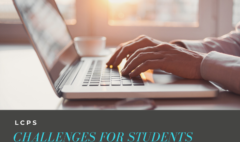The Best Online Learning Environment for Students and its Types
March 10, 2022 2022-03-11 19:04The Best Online Learning Environment for Students and its Types
The Best Online Learning Environment for Students and its Types
What is the online learning environment?
An online learning environment is a system that provides digital format services to learners and teachers in order to create dynamic and energetic learning environments. Discussion boards, assessments, eReadings, and study notes are all available through the Online Learning Environment (OLE). The online learning environments is generally an asynchronous setting, which means that you do not have to connect on to the computer network at the same time as your educator or colleagues to attend class. You will, however, be required to meet set deadlines for your writing assignments and learning tasks.
In this article, I will be sharing with you an overview on ideal online learning environments, the strategies of a good distance learning environment, and its types.
What are the 4 strategies to make a good online learning environment?
An optimal learning environment should promote the instructor-learner relationship while also providing a sense of assistance and engagement. Some strategies for this goal are described below:
-
Greet with a brief introduction:
Many instructors appear to undervalue the significance of the introduction. An introduction clip with the pleasant appearance of educators may leave an extremely positive impression. The introduction not only describes the program’s prospects and aims, but it also strengthens the bond between professors and students. A friendly, welcoming video conveys the lecturer’s personality far more effectively than several bullet points. It makes them more approachable and fosters a warm and happy environment.
-
Use the learners’ native language
Teachers can determine what is best for their students by researching and following their criteria. Good training should be focused on the learner. Furthermore, pupils should be allowed to select teachers with whom they can communicate. Instructors may be able to build a better relationship with students if they present academic problems in a casual and conversational way.
-
Encourage learners to ask questions
The importance of questioning in online learning cannot be understated. Students should be motivated to ask questions for a variety of reasons, including:
- To enhance their enthusiasm for the subject.
- To give them inspiration to learn more.
- To resolve difficulties in understanding a specific thing.
All of these reasons provide educators with valuable material for course improvement and student learning. Educators could motivate students by providing solutions and other resources related to the course, or even crediting pupils for their positive attitude. However, there is no need to respond to the questions instantly. It appears that leaving the difficulties for students to discuss and figure out on their own is the best course of action. It may make them feel more successful and help to strengthen the online student community.
-
Share your personal experiences.
Educators’ personal tales may help students get to know who they are learning from, resulting in increased trust on the part of the student. With online materials and resources provided by the instructor, e-learning enables simple access to quality education. The lack of personal communication, on the other hand, may have an unfavourable impact on students’ online experiences. Small tweaks to the instructional process could result in a significant improvement in eLearning engagement.
Explain the types of online learning environments?
There are three types of online learning environments that have been discussed below:
-
Virtual learning environment
A system or instructional platform that uses the internet to distribute learning resources to students. A virtual learning environment (VLE) is a collection of teaching-learning technologies aimed at improving a pupil’s learning opportunities by combining social media and the internet. Students and teachers can track their progress through a VLE plan, as well as communicate with each other through e-mail discussions, chat rooms, multimedia presentations, and more. A VLE package also includes links to outside curriculum content.
-
Formal & informal learning environment
Formal learning environment is defined as education that is presented “in a structured and planned manner.” It is planned and supervised by an instructor and usually takes place in a face-to-face environment or via an online learning platform. People at work think about formal training in terms of things like compliance training or new employee onboarding. These are the forms of training that require organisation, deadlines, and a clear aim.
On the other extreme is informal learning environment. It is unorganised, frequently unintentional, and takes place outside of a traditional teaching environment. It’s important to note that it’s self-directed, asynchronous, and has no particular goals; instead, it just comes automatically.
-
Personal & social learning environment
A Personal Learning Environment (PLE) is a collection of internet tools, learners, and facilities that provide personal learning materials and methodologies. It is focused on the person’s quest to learn.
Personal Learning Environments (PLE) are platforms that assist students in taking charge of and managing their own learning. They develop their personal learning objectives by following their instructor’s guidelines. They are also capable to communicate with each other effectively.
A social learning environment is a platform where users may collaborate to create content, spread information, and learn from each other. It has social features like networking, tagging, file transfers, and tweeting. This makes it safe for groups to work together and learn.
Conclusions
With online learning environment, students have unique access to quality education, having complete control over what, when, and how they acquire it. However, the negative aspect of it is the lack of instructor and peer interaction, which can lead to isolation and disinterest. Educators must establish a safe environment in which learners are welcomed and supported.








